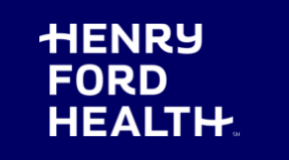EFFICACY AND SAFETY OF PEGBELFERMIN IN MASH CIRRHOSIS-A META-ANALYSIS AND SYSTEMATIC REVIEW OF RANDOMIZED CONTROLLED TRIALS
Recommended Citation
Shahzil M, Hasan F, Kazmi K, Salma UE, Banatwala S, Chaudhary A, Faisal MS, Khaqan MA, Gangwani M, Williams K, Mohan B, Tofani C. EFFICACY AND SAFETY OF PEGBELFERMIN IN MASH CIRRHOSIS-A META-ANALYSIS AND SYSTEMATIC REVIEW OF RANDOMIZED CONTROLLED TRIALS. Hepatology 2024; 80:S1256-S1257.
Document Type
Conference Proceeding
Publication Date
10-1-2024
Publication Title
Hepatology
Abstract
Background: Metabolic dysfunction-associated steatohepatitis (MASH), an advanced form of fatty liver disease, is characterized by liver inflammation and fibrosis, affecting 1.5-6.5% of adults globally. Lifestyle changes and medications are primary management options, with an emerging interest in fibroblast growth factors (FGF) like FGF21 and its analogs, particularly pegbelfermin (PGBF). This systematic review and meta-analysis evaluates the efficacy and safety of pegbelfermin in treating MASH-related cirrhosis. Methods: This meta-analysis followed Cochrane guidelines and PRISMA standards. A comprehensive search of CENTRAL, PubMed, MEDLINE, Embase, and Scopus databases up to January 2023 focused on RCTs comparing pegbelfermin to placebo for MASH. Two reviewers independently extracted data, and bias was assessed using the RoB 2.0 tool. Meta-analyses, performed with RevMan 5.4 using a random-effects model, set statistical significance at p < 0.05 and evaluated heterogeneity with Chi-square and Higgins I2 tests. Results: Data from 452 participants across three RCTs were analyzed, with 227 in the PGBF group (113 received 10 mg, 114 received 20 mg). Significant improvements in adiponectin concentration were observed in both the 10 mg (MD = 18.23, 95% CI: 6.35-30.11, P = 0.003) and 20 mg (MD = 18.09, 95% CI: 5.88-30.31, P = 0.004) PGBF groups compared to placebo. Significant reductions in PRO-C3 concentration were noted in both the 10 mg (MD = -25.50, 95% CI: -43.95 to -7.05, P = 0.007) and 20 mg (MD = -19.54, 95% CI: -33.33 to -5.76, P = 0.005) groups indicating hepatic benefits and reduced fibrosis. Significant improvement in MASH was seen in the 10 mg group (RR = 2.84, P = 0.02), but not in the 20 mg group (RR = 3.24, P = 0.15). No significant improvements in liver stiffness (10 mg: RR = 1.31, P = 0.23; 20 mg: RR = 1.41, P = 0.07), Modified Ishak scores (10 mg: RR = 1.25, P = 0.37; 20 mg: RR = 1.01, P = 0.98), or collagen proportionate area (10 mg: RR = 0.87, P = 0.63; 20 mg: RR = 0.88, P = 0.38) were observed in either the 10 mg or 20 mg groups compared with placebo. ALT and AST levels showed no significant reductions in either group. There was no significant risk of treatment-emergent adverse events (TEAEs) in either group, except for diarrhea in the 20 mg group (RR = 2.28, P = 0.005). Conclusion: Pegbelfermin, a promising therapy for MASH cirrhosis, has demonstrated effectiveness at 10 mg, significantly improving MASH and biomarkers such as adiponectin and PRO-C3. Despite mild gastrointestinal side effects, it maintains a generally safe profile. Further research with larger randomized controlled trials and extended follow-up is warranted to explore Pegbelfermin's role in enhancing MASH and liver fibrosis outcomes, particularly in combination with Resmetirom.
Volume
80
First Page
S1256
Last Page
S1257


